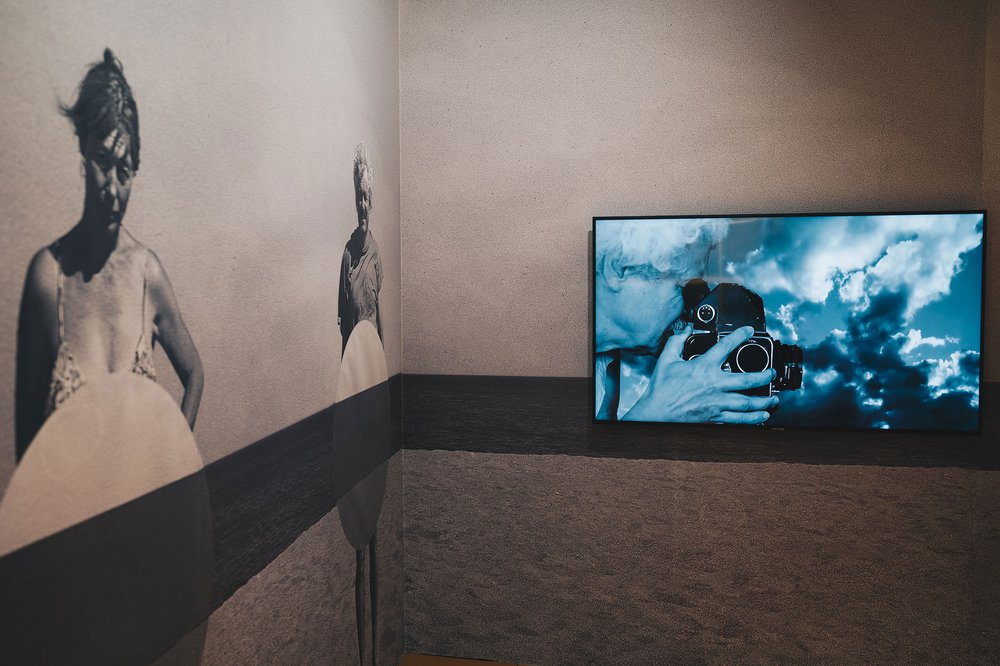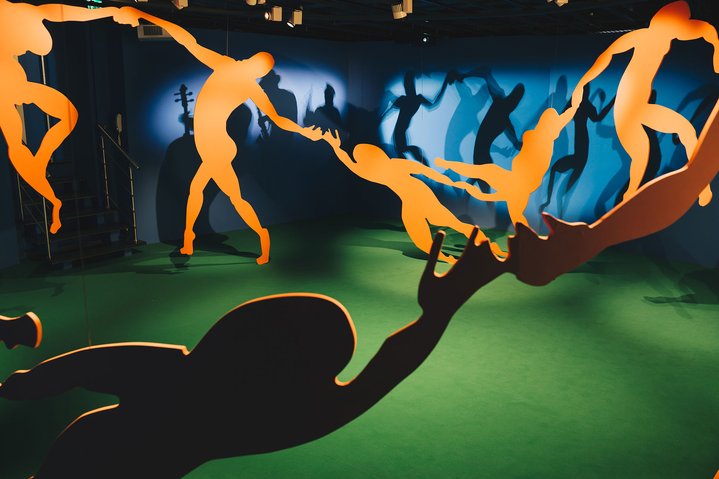Infanterriblia: the mesmerizing art of the Infante dynasty

Infante. Thoughts Out Loud. Fragment of the film by Alexander Dolgin and Iraida Yusupova, 2010
The exhibition "Family Values. Dance" that showcases works of three generations of Infantes opened at the Moscow’s AZ Museum.
Francisco Infante-Arana (b. 1943) was a Russian artist, the son of a Spanish immigrant politician, who was born in a remote village on the Volga during the Second World War. In the sixties and seventies, he became one of the pioneers of performance art, land art, kinetic art, installation art and photo-based art in the USSR. His works are always serial, and the series is characterized by consistency and a recognizable style, which can be called individual for two, because since 1968, Francisco Infante has been working with Nonna Goryunova (b. 1944), his wife - sometimes as co-author, often as assistant.
The family structure of artistic production allows this tandem to depend little on institutions. At the same time, Francisco Infante is one of the few non-official artists who actively exhibited before Perestroika. His art (under the pretext of "technical aesthetics") seemed more acceptable under the Soviet regime than the "bourgeois ideology" of abstractionism. Gradually, he became one of the leaders of the new wave of Russian art of the last quarter of the 20th century, and Infante and Goryunova's enormous solo exhibition (over 500 works!) in 2006 at the Moscow Museum of Modern Art confirmed them as living classics. However, their work has not spawned a school, remaining a personal project, unlike 'Moscow Conceptualism'.
What is identity for the Russian artist of Spanish descent, his wife and descendants? The exhibition at the private AZ Museum (named after non-conformist painter Anatoly Zverev) provides two answers. The first is “family values”, that is, salvation through self-organization, in which the family, a minimal “unit of society” becomes a Noah's ark, where art can survive in any political weather. The authors are neither a group nor a collective, but Francisco and Nonna along with their two sons, two daughters-in-law and eight grandchildren, each an independent artist. On the upper floor of the museum are the dibonds of Séverin (son) and Sofia (daughter-in-law). On the first floor is another branch: Daria (daughter-in-law) and Platon (son) with their installation. The show ranges from Ekaterina Infante's drawing “Cats for Granny” (on a video panel in the museum café) to “Projections of Reconstruction of the Starry Sky” (1965-67), a classic graphics series by Francisco Infante. Not included in the exhibition was his sheet (gouache, tempera) depicting stars aligned so that they form the letter Zet (1965–67).
Familiality is one of the characteristic features of Russian art at all levels, from the official (the Social Realist painters the Tkachev brothers) to the underground (father and son Kuzkin). The icon painting studios of Palekh and Mstyora, whose history dates to the 17th century, the Russian Academy of Arts in the 18th and 19th centuries and the Moscow and Leningrad Artists Unions in the 20th century: all these are creative communities largely based on the connection of different families. Their tangled roots and intersecting crowns are often the subject of museum interest. The exhibition “The Dynasty” at the Perm State Art Gallery (Perm) in 2021 showed the works of six artists of three generations from the Moscow-Crimean Arendt family. A project devoted to the Bruni family is due to be shown at the St. Petersburg’s Academy of Arts in autumn 2022 and will include work by authors ranging from Fyodor Bruni (1799 - 1875) to Laurenty Bruni (b. 1961), a nephew of Fyodor Bruni in the fifth generation. However, attempts to show family phenomena as a rule do not go further than genealogy. And the reasons for such medieval-style self-organization rarely come to the attention of the curators.
The exhibition at the AZ Museum offers a different approach. Here the family acts as the art school, the direct descendants assuming the role of continuers, heirs to kineticism, performance and photography-based art in the new, digital age. “The digital revolution has taken over what we were doing long before it came along," believes Francisco Infante.
And they are also dancing! The exhibition is anchored by a multi-channel video installation: the shadows are doing cartwheels, spinning in a circle made by Daria Konovalova-Infante (b. 1978) and Platon Infante (b.1978) especially for the museum based on Henri Matisse's panel ‘Dance’, and next to them parents Daria and Platon and their four older children are dancing with musical instruments as shadow figures. The original title of the exhibition, Dance, has been changed to a less cheerful and more conservative ‘Family Values’ due to current events. Dance becomes an identity. And with it, the entire history of the Infante family takes on a new meaning of a merry game of three generations for whom “family values” are not family diamonds, but the principle of co-creation.








